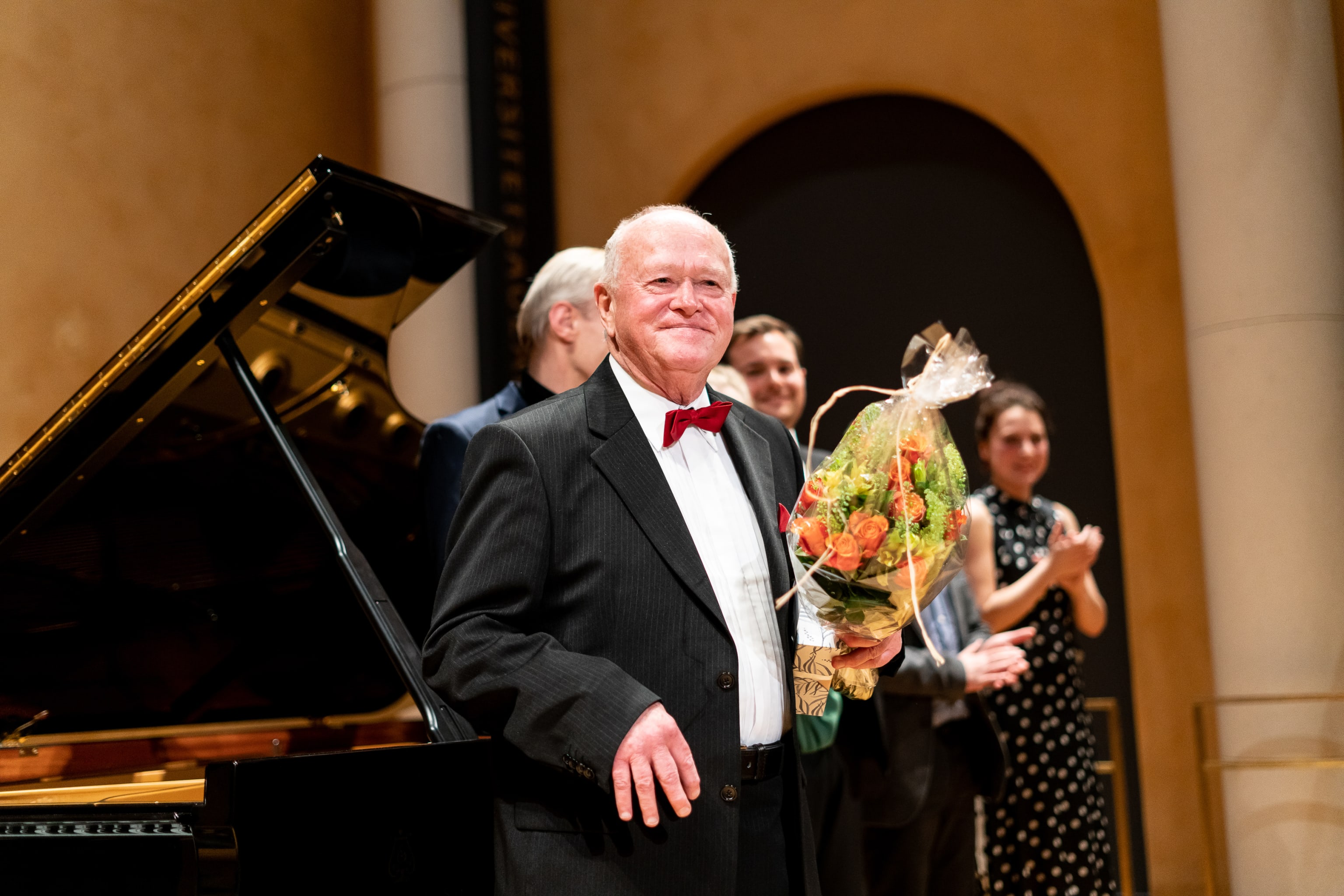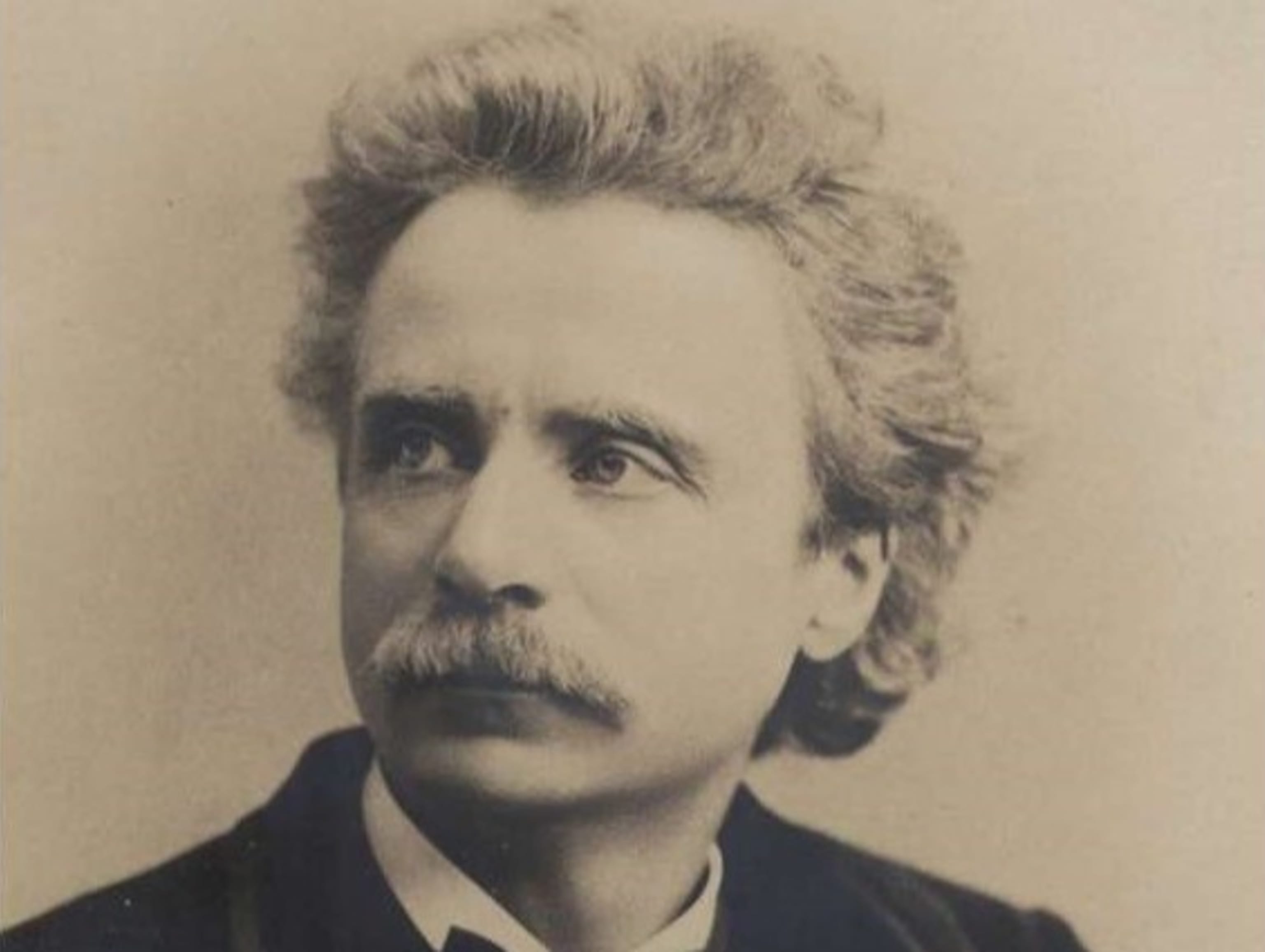A winter guest on his home turf
- Home
- Festival
- 2021
- Articles
- A Winter Guest On His Home Turf
- By:
By: Ketil Mosnes,
April 26, 2021
Alan Lucien Øyen brings dance, multilingual theatre and Liv Ullmann to his hometown.
He choreographed his first piece as early as in 2004, and two years later he established winter guests; an interdisciplinary company that brought together actors, dancers, writers, set designers and technicians. Today, writer, director and choreographer Alan Lucien Øyen is considered one of Norway's most pioneering artists, and the 43-year-old’s work within the performing arts has been critically acclaimed around the world. Øyen has also won several awards, for choreographic works as well as theatre productions. The six-hour play Coelacanth brought him, among other things, the prestigious Norwegian Theatre Award Hedda.
Øyen has said that he more or less grew up inside Den Nationale Scene – Bergen’s largest and oldest theatre; his father worked there as a dresser, and at the age of seven the future stage artist was captivated by the various performances he experienced at the theatre. As a 17-year-old, he began studying ballet with the Hungarian ballet master Peter Tornev, before his career continued via the Academy of the Arts studying ballet in Oslo and the dance company Carte Blanche in Bergen to the American choreographer Amanda Miller's company Pretty Ugly in Cologne in 2005.
Since then, Øyen – who is based in Oslo – has built an impressive track record. Bergen International Festival talked to the artist in order to learn a little more about his work:
– You started as a dancer. When, and how, did you realize that you would rather do choreography and text?
– Pretty early, to be honest ... it was the first day at the Academy of the Arts in Oslo. I remember asking if it was possible to switch to acting classes, ha ha …of course I knew that it didn’t really work like that, but I got this immediate feeling that I had made the wrong choice. In retrospect, I'm very happy that I stayed in the ballet classes, but … I don’t know … I do have some background from the theatre in Bergen when my father worked there, and I have always written a lot of texts. When I started doing choreography as a young dancer, I often put long monologues inside what were actually supposed to be dance solos. In the end, there was so much text included in what I made, it couldn’t really be considered dance performances anymore. That’s when I started working with actors. Since then, I have occasionally worked with dance and theatre separately, while other times it has been mixed. The more assignments I got from dance companies, the more theatre I did for winter guests.
– To what extent to you feel that there is a distinct difference between being a choreographer, a writer, and a director?
– Usually, I like to say that I can’t really see the difference between theatre and dance … in many ways, it’s about the same thing: It must be credible, you have to believe in the person in front of you. Theatre and dance are very concrete things. As a performer, the task is the same whether you express yourself through text or movement; to create contact with the audience and to be credible. And my project … I’ve always been very concerned with humanity, and I'm looking for an expression that is as sincere as possible. It can be a little challenging when working with dance, because it’s a language we don’t recognise from daily life; we don’t usually move like that! And then it becomes all the more important for me to make the dance as natural as possible. When I work with theatre I sometimes think: 'Oh, I wish I had worked with dance instead, because then I don’t need to know what everything means', while when I work a lot with dance I sometimes think: 'Oh, it's hard to work with dance, because I don’t know what it means', ha ha! So it gets a little ‘the grass is always greener on the other side’-ish. That said, I have appreciated having the opportunity to change between theatre and dance, as it prevents me from getting bored or stuck…
– When looking at your work list for the last fifteen years, it’s quite clear that you have travelled a lot. How has the pandemic affected the way you work this past year?
– It was a pretty abrupt transition! (Laughter …) In 2019, I was at home in Norway for a total of three weeks. The longest continuous stay I did at one place was four weeks in Taipei. On average I believe I spent five days in each new place, so to be honest I was pretty tired of travelling when the pandemic broke out. Gradually, however, I have realised that much of the progress and energy in my work comes from meeting new people and being on the move. The fact that everything suddenly stopped … it simply became a little difficult to dream and imagine things, as the future was so indefinable. So yes, it has been demanding, but at the same time a lot has been moved to 2022, like this large project I have going on at the opera in Paris. And I haven’t really experienced the situation as an anticlimax, because everyone stopped doing what they were doing! Everyone was in the same boat…
During the 2021 Bergen International Festival, Alan Lucien Øyen and winter guests will be performing The American Moth; a hybrid multimedia performance that combines dance, multilingual theatre and cinematic live video, featuring the famous Norwegian actor Liv Ullmann in the cast. The show will later be staged in both Taipei and Washington D.C. Øyen is the director and choreographer, and has written the script together with longtime collaborator Andrew Wale.
– You have been collaborating with Andrew Wale on scripts since 2009. How do you work together on the development of stories? Do you meet and ‘brainstorm’, or do you write separately?
– It varies. We have worked so much together now, and in many different ways as well. Sometimes we have literally been sitting next to each other, other times we have written parts of the show quite separately. Regarding The American Moth, we used Zoom, and we worked a lot separately. The starting point for the story line often depends on the process; at several occasions it comes from the performers; I mean, maybe not the specific content, but the conversations during the process form a starting point for the stories we choose to describe. And it's partly because I want the performers to be able to relate to the story, and that the thoughts and reflections they’ve got can get into the characters. This became very important in regards of The American Moth; we had made a lot of plans that we simply had to shelve because of the pandemic, and everyone felt affected by the situation and reality we were in.
– So The American Moth is not about the pandemic as such, but it is influenced by the pandemic?
– Yes. We haven’t made a 'pandemic performance', but it's about the thoughts we bother ourselves with when we are confronted with ourselves to such a large degree, like many of us are now.
– America is a theme in several of your previous works. What is it about America that fascinates you?
– America to me is fiction. The borderline between fiction and reality is engaging to me, if there really is any difference at all; everything related to dreams and memories is also fiction, because it doesn’t exists. For me, America is this kind of 'reality fiction'; everything feels familiar and close because we have such a proximity to American culture … as if it was my own reality and culture. But when I actually visit and experience “America” (defined as USA), I get a strong feeling that this isn’t like I expected it to be. The concrete images, and the people, are so exposed through the media. It is so familar, but at the same time so different.
– How did the collaboration with Liv Ullmann come about?
– Working with Liv Ullman has been a dream of mine for as long as I can remember. I saw a performance of hers in Oslo, and afterwards I met her through a mutual friend. It was a very nice meeting! She also attended a performance – The Hamlet Complex – that I did at the Opera in Oslo, and it made a great impression on her.When we started working on The American Moth before the pandemic we wanted to do something about dementia; what happens when the memories disappear and the past disintegrates. The scary and sad thing about dementia is that you can become terribly aggressive and almost develop a personality change. The world's nicest human can turn into a “monster”. And then I thought: 'Who can give life to such a transformation better than Liv, who is the most beautiful person imaginable!' Actually, it feels a little bit like we’re all demented right now; the past appears incredibly distant, and the future doesn’t exist.But, yes … working with Liv is a dream come true! In the ensemble working with this performance, the age span goes from the early twenties to Liv, who is in her eighties. And she is so full of energy, and so sharp… she is in many ways the youngest person in the room. It has been really inspiring to be allowed to work with her, and to see that if you want something, you can do it. Regardless of age!
Supported by Vestland county council



